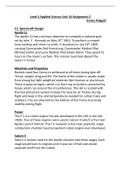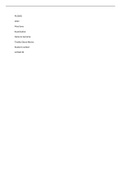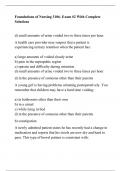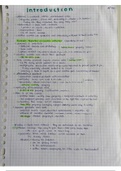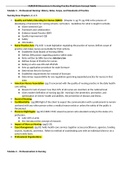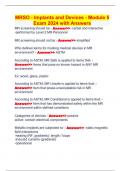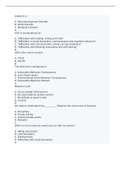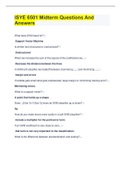Summary
Summary Unit 16 Assignment C
- Institution
- PEARSON (PEARSON)
Unit 16 Assignment C Overall Grade: Distinction Course Overall Grade: D*D Contains: Apollo 11, materials of a rocket, properties of a rocker, power, Saturn V rocket, space radiation, electrical power supply, Apollo 13, micrometeorites, heat shields, newtons laws, launching of a rocket, gimba...
[Show more]
